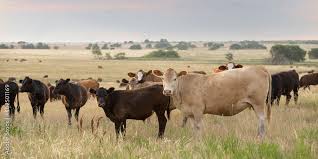- Tweet
- Printer Friendly
Determining Cattle Temperament

What is Temperament?
Cattle temperament is often defined in literature by the animal’s response to handling or forced movement by humans. It is a pattern of how an animal perceives alarming or challenging situations. Responses can be as small as vocalization, increased respiration, or agitated movements. However, responses can also be extreme, like attempted escape or charging. This is important to producers due to the risk to human safety and animal welfare when cattle respond negatively. Temperament traits, like aggression and fear, can be detrimental. “Handling Temperament” is the most-common set of traits studied, and practical measures are available to determine an animal’s temperament.
First let’s breakdown behaviors linked to temperament.
- Response: Does the animal respond quickly or hesitantly?
- Adaptation: How easily does the animal adapt to new situations?
- Level of activity: Do animals walk around and explore? Are they alert?
- Reaction threshold: What level of stimulation is required for the animal to respond?
- Intensity: When the animal responds, how intense is their reaction?
When walking up to a group of cattle, the first one to raise its head and give you attention usually has a low reaction threshold. They tend to be the most reactive as well. If the group starts to walk away from you, this animal is likely leading the pack.
Temperament Assessments
All of these assessments can easily be conducted during routine handling. While you have the cattle up and ready to work, scores can be assigned and added to your recordkeeping. For these assessments, scores of 1 to 4 or 1 to 5 are used and can be determined simply by observation. However, there are many factors that can influence an animal’s reaction, so these measures should be repeated if used to make culling or breeding decisions. The value of these measures depends on repeatability; the suggestion is three times for accuracy, as temperament is usually stable over time.

DOCILITY TEST
This test is also referred to as “Pen Score” and is the primary test used while the animal is not restrained. There are different approaches to this test, but the simplest is to move a small group of animals to a separate pen, and approach them one animal at a time. A score (1 to 5) is used to measure the intensity at which the animal avoids the approach.
1 = Non-responsive
2 = Slightly responsive
3 = Moderately responsive
4 = Responsive
5 = Very responsive
Cattle with a score of 5 would attempt to escape the pen, whereas cattle with a score of 1 would allow you to approach easily.
These assessments are an easy way to determine the temperament of your livestock, ensuring the safety of animals and humans during handling events.
Source: South Dakota State University